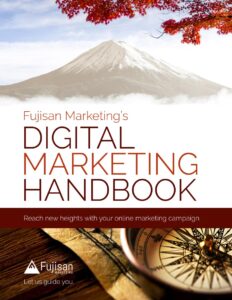When running an ad campaign on a Meta platform like Facebook or Instagram, it’s of course unwise to just throw gobs of money at it without considering what your return will be for those dollars — and how that return will equate to conversions and money coming in.
To that end, being able to project how much money you’ll spend, what that will equate to in relevant metrics, and how much revenue that will return is an extremely important foundational step for these campaigns.
The truth is that no one can give a perfect projection. But — whether you’re doing this for your own business or are a marketer working for a client — the key is understanding A) that forecasts are educated estimates based on best knowledge and B) an accurate forecast is vital for an effective campaign.
Here’s our approach for forecasting on Meta:
Using historical data
This is a pillar of accurate forecasting.
Potentially the single best avenue for putting together projections is reviewing historical data — it’s very likely the performance will be, while not the same, notably similar. And the more variables are constant from past data to your latest campaign, the more reliably similar the performances are likely to be.
At Fujisan, we’ll often take a look at existing accounts’ past results and use those as a starting point — for example, if we’re starting a new traffic campaign for a client and we’ve seen a click-through rate of 1.5% for past traffic campaigns for the same client, we’ll expect comparable results moving forward.
Even if there are more uncontrolled variables between historical campaigns and your new one, you can still get a better idea than otherwise by looking at historical data. This is especially true the greater volume of historical data you’ve accrued — if you have many past traffic campaigns and click-through rates hover around 1.5% for all of them even when they have many varying details, you can pretty confidently expect similar results for a new one even if it has quite a few differentiating variables.
Take Fujisan and our work again: Once we recognize these expectations of, say, a ~1.5% click-through rate, we can also better evaluate changes we make to an account’s campaign to confirm which are optimal. Whether that’s audience, ad copy, or other details, if we make changes and see the performances subsequently improve and outshine historical data, it helps us close in on what moves are most valuable.
Ads Manager forecasting tool
Beyond your own manual research and insights, Meta offers their own forecasting tool too, which is handy.
The first step is to decide your campaign objective and create a campaign draft based on that objective.
After that, the second step is identifying and creating a prospecting audience and from there building it out in the ad set. (We should note here that you can’t get projections for custom audiences though.)

An example: Targeting 25-50 year-olds, within a 10-mile radius of Seattle, who are interested in cycling.
Step three: Enter your proposed budget. Let’s use $1,000 as an example.

Step four: Once you’ve input this information, Meta will show a forecasting estimate on the side panel. You should note, however, that these metric channels will change depending on the objective you selected in the first step.
Step five: Repeat with different potential budgets, averaging your results and constructing different budget tiers for your campaign along with their forecasted metrics. The example below shows a hypothetical with budget tiers of $1,000, $5,000, and $10,000.
| Budget Tier | Budget | Reach | Clicks |
| Low | $1,000 | 6,050 | 132 |
| Medium | $5,000 | 19,500 | 444 |
| High | $10,000 | 25,500 | 619 |
Some notes to keep in mind about the forecasting tools:
First: Of course, like we discussed earlier, even the most accurate projections are just that. They can be very well-informed, accurate estimates, but they are still estimates meant to guide your decision-making — not guarantees. In our experience, these forecasts can align extremely closely, but occasionally for whatever reason can also be way over or under.
As an example, at Fujisan we’ve seen a client earn well over eight times higher engagement than we had originally forecasted using both Meta’s forecasting tool and our historical data. That of course was a huge positive for this business, but it can go the other way too, so you should be able to prepare for that.
We also want to emphasize that certain campaign objectives generally have more accurate forecasts than others. In general, we find that the further down the marketing funnel users are for your objective, the less accurate the forecast is. I.e., forecasts for leads and purchases objectives are usually much less accurate.
For this reason, we primarily use this forecasting tool for top- and mid-funnel campaigns, or for projecting secondary metrics like clicks, reach, impressions, etc.
Second: Sometimes the estimated results will come back with zeros. Obviously, this doesn’t mean your campaign won’t run — usually it just means the audience size is too narrow or the budget too small for it to accurately generate a projection. Unfortunately, this is just the reality of forecasting needing to reach a certain sample size to work, since its projections only work at a certain scale.
Lastly, Advantage+, which limits your ability to customize campaigns in favor of Meta’s algorithm plus AI determining your audience, disrupts some of the specifics that you can enter when creating your audience. Although Meta claims it’s more efficient, we typically advise against using this since it limits your own input and in doing so can expand outside your target market. If you do use it, however, you may see that forecasts aren’t super reliable, so proceed with caution.
Still, we recommend switching to the original audience options like we detailed earlier.
Bottom line
The main takeaway we want to emphasize is really just how immensely useful these tools and historical data are.
Whether you’re using them for your own business to plan out your strategy or are a marketer helping educate your own clients, forecasting your metrics is an important backbone upon which to build your campaigns. While they’re not infallible and have certain limitations, we highly recommend getting in the habit of beginning all your campaigns with a projection of what to expect; these forecasts will help you plan and strategize accordingly, and avoid accidentally biting off more than you can chew with little to show for it when it’s all said and done.




